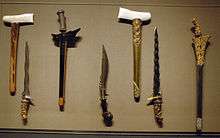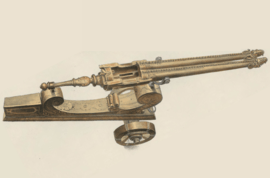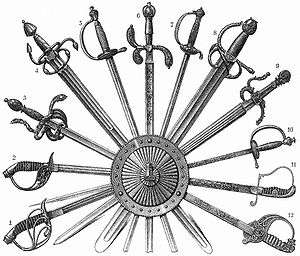Parang Nabur
Parang Nabur (other names also include Belabang or Beladah, while older variants are called Pacat Gantung or Pacat Bagantung) is a sword that originates from Banjarmasin, South Kalimantan, Indonesia. Most of this sword is made during the Banjarmasin Sultanate period in the 19th century.
| Parang Nabur | |
|---|---|
 An illustration of a Parang Nabur. | |
| Type | Sword, Cutlass |
| Place of origin | Borneo (South Kalimantan, Indonesia) |
| Service history | |
| Used by | Banjarese |
| Specifications | |
| Length | 50–90 cm |
| Blade type | Partial double edge, convex grind |
| Hilt type | Buffalo horn, bone, wood |
| Scabbard/sheath | Wood |
Description
The Parang Nabur is a sword with a curve blade broadening towards the point, with its widest section at the curvature.[1] The edge is convex, the back is concave. It has a double edge for about 2/3 to 3/8 of the blade from its front tip. The edge may bend towards the back or the back may bend towards the edge at the point. The hilt is usually made of horn or bone, sometimes of wood, and often has a protection for the hand and fingers made of brass or iron. The hand guard and parry are made according to European model, strongly influenced from the naval cutlasses carried by the Dutch sailors, and shows a perfect blend of European with Islamic styles. The scrabbad is usually made of wood and is in two parts held together by bands of metal and it follows the blade's shape.[2] The Parang Nabur is also not to be mistaken with Niabor.
References
- Nick Evangelista (1995). The Encyclopedia of the Sword. Greenwood Publishing Group. ISBN 0-313-27896-2.
- Albert G Van Zonneveld (2002). Traditional Weapons of the Indonesian Archipelago. Koninklyk Instituut Voor Taal Land. ISBN 90-5450-004-2.
Further reading
- George Cameron Stone; Donald J. LaRocca (1999). A Glossary of The Construction, Decoration and Use of Arms and Armor: In All Countries and In All Times. Courier Dover Publications. ISBN 978-0-486-40726-5.



